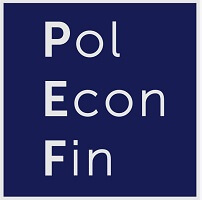Governance in a Polarized World
Opinion
On October 24, 2025, the 5th edition of the Stigler Center–CEPR Conference on the Political Economy of Finance was hosted at Imperial College London. The theme, “Governance in a Polarized World,” brought together researchers exploring how polarization forces changes to private and public governance, in turn reshaping firms, markets, and institutions. Across four sessions, the papers traced a common thread: politics is no longer a backdrop to economic activity but a force that structures supply chains, consumer behavior, corporate organization, and even the narratives that bind societies together. Interestingly, the keynote of Nobel laureate Jean Tirole (Toulouse School of Economics) emphasized the recurrent trait of societies and organizations and the importance of building “commonalities.”
The day opened with a session on polarized consumers and suppliers, chaired by Tommaso Valetti (Imperial College London). The first paper, “Do Consumers Spend Their Money Where Their Votes Are? Ideology Distance and Local Sales,” showed that where firms and local voters are ideologically distant, sales suffer: using granular retail scanner data, the authors document within U.S. counties that increasing ideological distance can cut firms’ annual sales, with the effect intensifying after the 2016 presidential election and in wealthier, more Republican-leaning areas. Both demand and supply prove political: consumers buy more from ideologically aligned firms when local ideology shifts, and firms avoid entering politically distant markets even though they do not seem to fine-tune product lines once they are in. The second paper, “Polarized Consumers & Suppliers,” moved from customers to suppliers, demonstrating that U.S. firms increasingly choose politically aligned suppliers. This partisan matching increases supply-chain resilience—relationships are more likely to survive natural disasters and regulatory shocks and market value losses are smaller when disruptions hit—but comes with a cost: firms with more aligned suppliers face higher costs of goods and exhibit less innovation, investing less in R&D and filing fewer patents.
The second session, chaired by Enrico Perotti (University of Amsterdam), examined electoral politics and finance. “Firms as Electoral Monopsonies” proposed a model in which dominant employers leverage local labor market power to influence political outcomes by conditioning economic activity on election results, shifting voters away from redistributive policies to protect their jobs. Therefore, this form of electoral interference creates polarization in the community. Empirically, using U.S. individual voting records, the authors found that areas with more concentrated employment see higher Republican registration, turnout, and donations, alongside long-run declines in population, labor force, tax base, and public sector size. The following paper, “Hidden Campaign Finance: Evidence from India,” turned to India’s experiment with anonymous “electoral bonds,” which allowed firms to donate secretly to political parties from 2018 until a 2024 Supreme Court ruling retroactively revealed about $2 billion in hidden contributions. By linking these data to historical campaign finance and firm-level administrative records, the authors showed that anonymous giving dwarfed disclosed donations, more sophisticated firms disproportionately used the hidden channel, and secret donors behaved more strategically; when anonymity was removed, these firms suffered sharp negative abnormal stock returns, driven by adverse media coverage. The paper offers rare evidence on scale and consequences of dark money.
The third session focused on the endogenous polarization of firms, chaired by Helios Herrera (University of Warwick). In “Banking on Conflict: Managers and Organisational Design,” the authors examined how the internal structure of organizations reflects multiculturalism and how shocks that amplify polarization shape their organization design. Using a novel data on the internal organization and management practices of Ethiopian banks, they found that greater civil conflict exposure induces bank branches to hire managers who are co-ethnic with the city they work in rather than with the parent bank, while also moving toward steeper hierarchies and improving performance management practices; these organizational changes help banks maintain lending performance. Their paper illustrates one of the mechanisms via which multicultural organizations respond to polarization. The following theory paper, titled “Political Preferences and Financial Market Equilibrium,” considered the asset pricing implications of politically motivated investors when firms can choose their political stances to cater to their preferences. In the model, investors tilt portfolios toward politically aligned firms, distorting risk sharing, while firms strategically choose their stance to attract the investor group with the greatest price impact. They found that competitive equilibrium with value-maximizing political stances need not maximize overall welfare, and partisan firms generally display lower expected returns than politically neutral firms.
The final session turned to public governance and firms, chaired by Patrick Bolton (Imperial College London). The paper “How to Govern Corporate Governing? A Policy Roadmap” argued that corporations increasingly engage in “corporate governing”: a combination of socio-economic advocacy on contested issues and de facto substitution for the state when firms step in to perform public functions. The author argues that these practices risk bypassing democratic processes and undermining accountability and points out that the existing legal doctrines are poorly equipped to address these concerns. The paper advocates for outlined reforms built around greater transparency and procedural safeguards, and highlights the need for reinvigorating democratic institutions in order to reclaim public decision-making.
The highlight of the conference was certainly Jean Tirole’s, “Engineering Commonality,” asking how societies and organizations create the shared sense of “we” that makes cooperation possible. Starting with quotes from Georg Simmel (“All relationships of people to each other rest upon the precondition that they know something about each other”) and Ernest Renan (“Now the essence of a nation is that all individuals have many things in common, and also that they have forgotten many things”), he argues that societies and organizations actively emphasize what unites their members and downplay what divides them. This emphasis on commonality stems from mutual trust and parochial altruism, the “lubricant” making these organizations and societies operable. Beyond incentives, Tirole focuses on an information channel: people learn about each other and leaders strategically communicate identities and values to forge commonality, tapping into both rational trust and hard-wired parochial altruism. His model then studies how this process can be gamed—through preference misrepresentation and strategic communication—showing that full, common-knowledge congruence is not necessary for teams to function, and that we must think carefully about when learning more about each other strengthens, or instead undermines, cooperation. His broad, unifying perspective provided a fitting intellectual capstone to a conference centered on governance in an increasingly polarized world.
The conference is part of our PolEconFin initiative, which seeks to provide a meeting point for theorists and empiricists with shared interests in the political economy of finance and build a research community. Interested? Please join us, we are looking forward to your involvement in this initiative!
We hope to see you at the next edition of our conference, which will be hosted by the Stigler Center in 2026. Stay tuned!
Co-Author(s): Magdalena Rola-Janicka
# Tags: Commonalities | Conference | Democracy | Finance | Governance | Markets | Nobel | Organizations | Polarization | Society
Author: ALI LAZRAK
Author: Thomas Lambert


